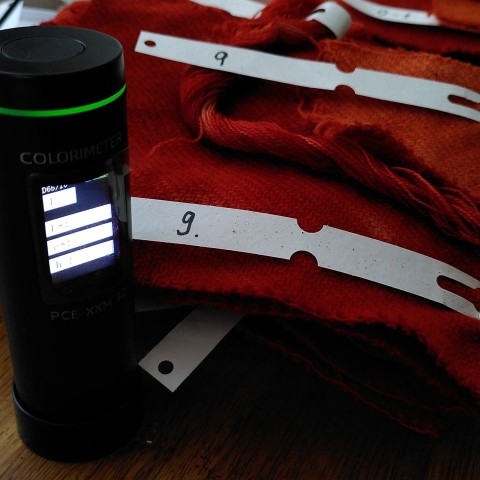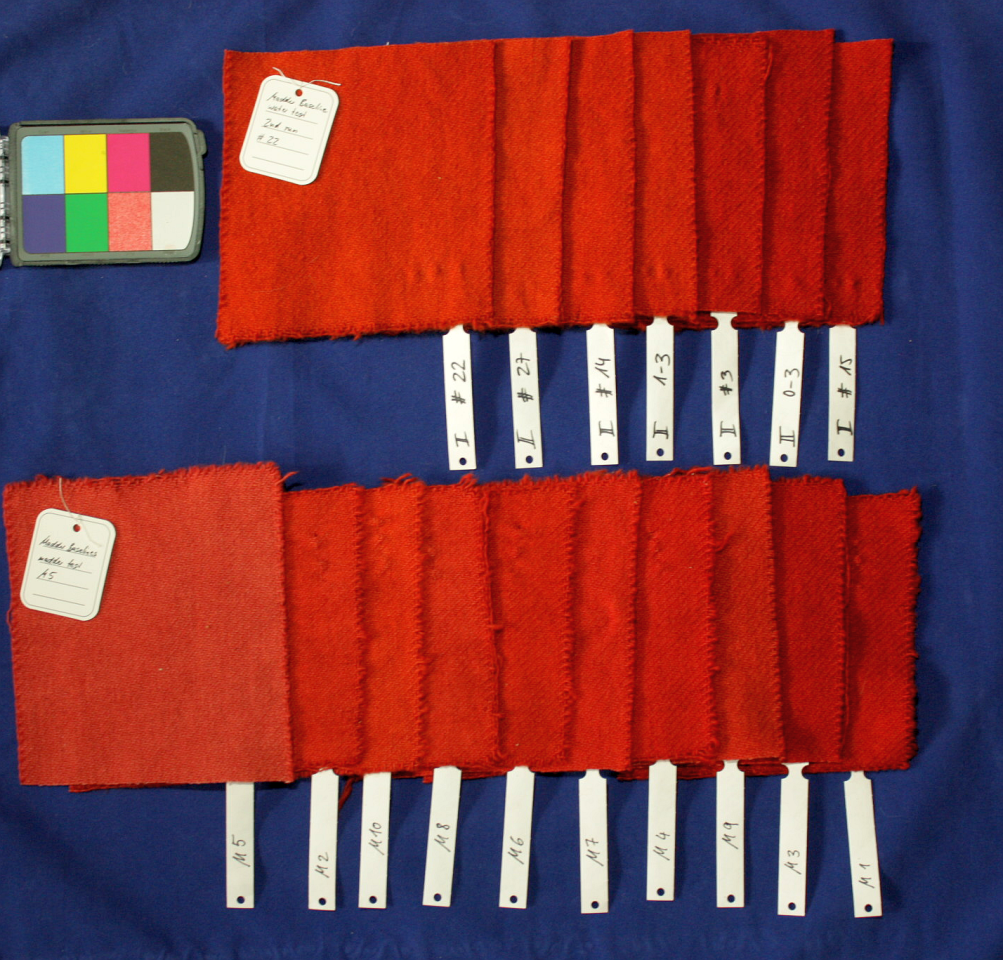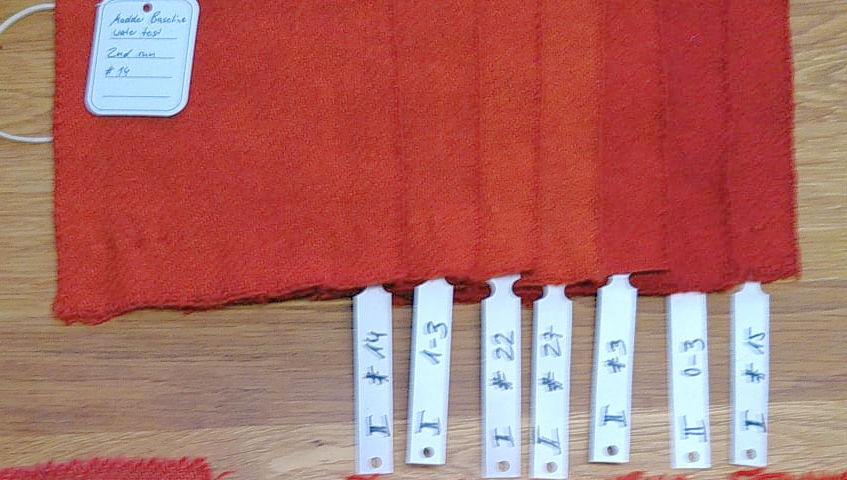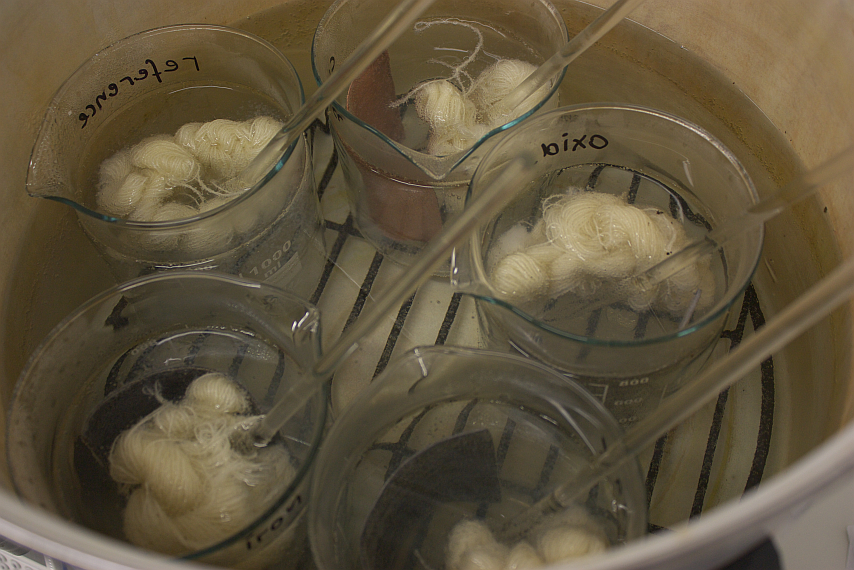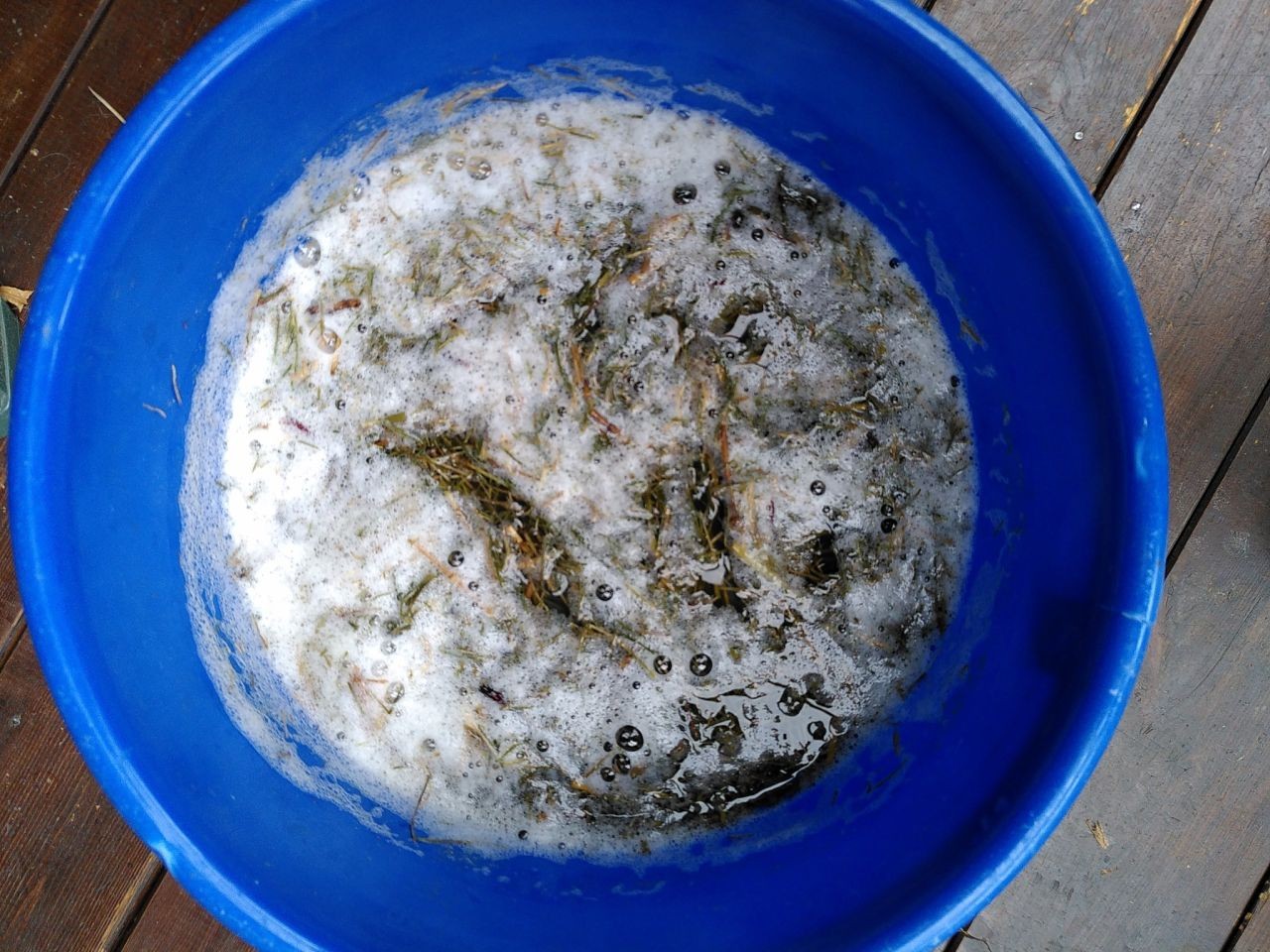One of the main things on my desk at the moment is work on the Madder Baselines experiment - at least a bit of a preliminary write-up has to be done, and, well, I am more and more convinced the stuff is called madder because it makes me... the same.
Also, there's such a huge difference between looking at colours on the fabrics in real life and in daylight, and in looking at them on a photograph on the screen. Print will probably be different again, too, but for now, I'm frustrated enough by not getting nearly as much of a difference on the pictures than they show when yo look at the objects.
On that image, four should be very similar to each other, and the other two quite different from the group, with some difference between them as well. That's one of the better images actually, where it's relatively easy to distinguish at least on my screen. The others... ah well.
There's also quite a stack of results (dye-wise) that I'm not sure how to make sense of. Samples that should be exactly the same colour are sometimes (almost) the same, sometimes not. The samples from the pots running in parallel are quite well-matched to each other, the samples from a second run with the same ingredients don't match those of the first run.
As I said - quite surely, madder comes from crazy!
At least it's a pretty red. Or some of them. Mostly.





